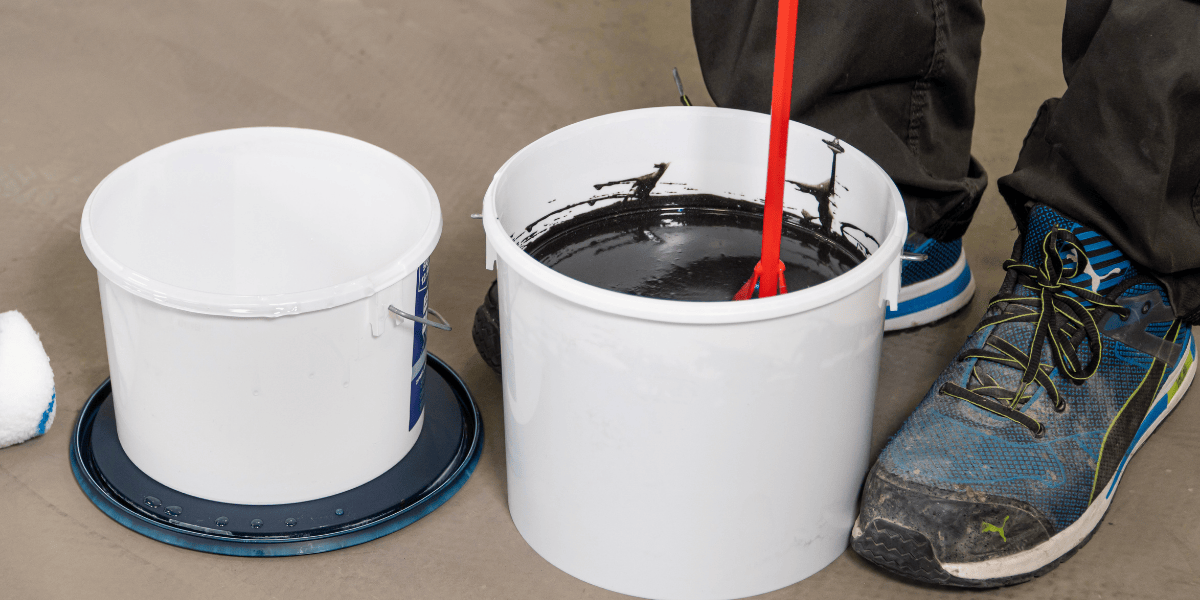When there’s a positive collaboration between manufacturers and installers, you get the best installation possible. Manufacturers count on their products being applied properly to deliver “what it says on the tin”, while installers rely on the best quality products to achieve the finish that everyone expects.
When it comes to applying flooring preparation – damp proof membranes, moisture suppressants and adhesives – many products have multiple components. Getting the right mix technically may seem like a small detail, but it’s actually crucial to success.
So why be particular about getting the right mix? Let’s break it down and look at what can go wrong if steps are skipped.
Ratios
Primers, for example, are mixed with specific amounts of water to match the required dilution for the intended use. The manufacturer’s technical data sheet (TDS) holds the answers. If you get the ratios wrong, you can’t expect the product to perform properly, creating a weak link in the final installation.
Mixing epoxy resins
Again, following “what it says on the tin” is key. Reading the TDS and using the recommended method prevents poor performance. Some products require back-mixing to enable safe disposal, following local and national regulations so they can be treated as non-hazardous waste. Unmixed material is hazardous and needs specialist disposal. Skipping these steps can have a knock-on effect that outweighs the cost of the entire installation – the TDS provides all the relevant information.
Adhesives
Depending on the product, mixing an adhesive that has been left to “rest” might improve the overall chemical reaction, making it ready to use. It’s recommended to check the TDS to know what’s best for the specific product.
Smoothing compounds
When using a “bag and bottle” product, the quantities of both the powder and liquid are provided based on science and testing. Adding more liquid will “water down” the mix, and if not fully mixed, the chemical reaction may fail, potentially compromising not only the product but the entire installation.
Mixing tools
Years ago, it wasn’t uncommon to see smoothing compounds mixed with a broom stick or even an old door bar – really scraping the bottom of the barrel! Thankfully, today’s installers rely on mixing drills and stations for larger applications. These methods give better results and allow the use of different mixing heads and paddles available with benefits for different products.
Paddle types and principles – why do they matter?
- Type WK and MK (mix upwards) – Ideal for heavy materials like mortar, plaster, screed, or concrete. The clockwise, bottom-up action works like a screw pulling material upwards, which reduced mixing effort and ensures the heavy components are properly blended.
- Mix downwards – Best for soft or runny materials like self-levelling compounds, paints, coatings, or gypsum plaster. This action pushes material down from above, minimising splashback and keeping the mix under control. For denser materials, it may require more effort.
- Type KR (mix horizontally) – Commonly known as the “birdcage” paddle, it’s excellent for smoothing compounds and very viscous sealers or adhesives. Its lateral mixing action delivers high shear forces, prevents lump formation, and ensures rapid, uniform mixing. Its design, with no upward or downward parts, helps avoid trapping air or creating dead zones.
- Forced action paddle mix – Features two counter-rotating paddles that create forced mixing action, making it ideal for particularly challenging materials like concrete screed, synthetic resin-based materials, etc. This setup forces the materials to rapidly and repeatedly pass through the mixing zones, ensuring complete blending.
Ready to “mix it up” yourself? Training facilities like Bostik Academy offer practical demonstrations, explaining why products are made the way they are and sharing best industry practices. Contact us to arrange personalised training sessions for you and your team.


